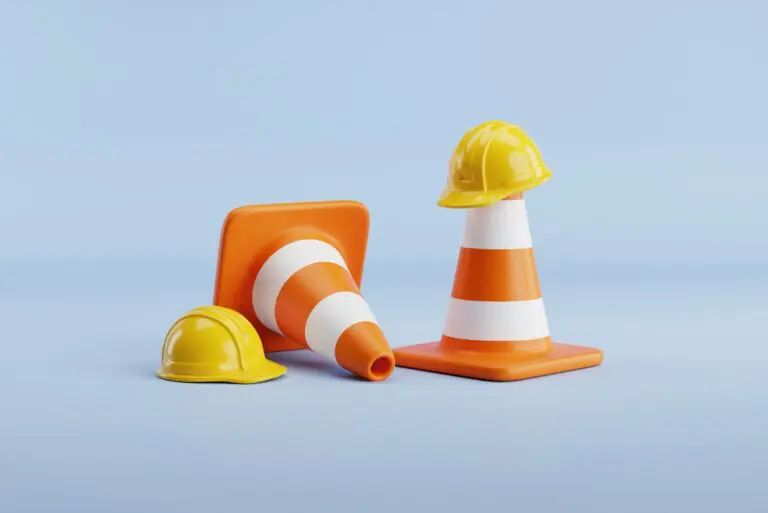Ever wondered why your WordPress site feels like it’s stuck in a time loop? It’s probably because of poor WordPress Core Web Vitals. Don’t worry, you’re not alone. Many website owners face this issue, and it’s mostly due to underperforming web components. Therefore, understanding and optimizing these metrics can significantly enhance your site’s performance.

Speed matters. In fact, a one-second delay in page load time can lead to a 7% reduction in conversions. Consequently, addressing issues like slow server response times, unoptimized images, and inefficient CSS files can make or break your site’s user experience. Improving these elements not only boosts your site’s speed but also positively impacts your SEO performance.
Ready to dive deeper into this rabbit hole? Let’s fix those pesky performance issues and get your site running like a well-oiled machine. Read on to uncover how to optimize your WordPress site for maximum speed and user satisfaction.
Understanding WordPress Core Web Vitals
WordPress Core Web Vitals are crucial metrics introduced by Google to measure user experience on a website. They primarily focus on three aspects: loading, interactivity, and visual stability. These metrics matter because they directly impact your site’s performance and search engine rankings, making them essential for any website owner to understand and optimize.
Web Vitals Metrics Explained
Firstly, let’s talk about the three core metrics: Largest Contentful Paint (LCP), First Input Delay (FID), and Cumulative Layout Shift (CLS).
Largest Contentful Paint (LCP) measures how long it takes for the main content of a page to load. Ideally, LCP should occur within 2.5 seconds of when the page first starts loading. A longer LCP can frustrate users, causing them to leave before the page fully loads.
Secondly, First Input Delay (FID) tracks the time it takes for a page to become interactive. This metric should be under 100 milliseconds to ensure a responsive experience. High FID can make the site feel sluggish, leading to a poor user experience.
Finally, Cumulative Layout Shift (CLS) measures visual stability. It checks how often elements shift on the page unexpectedly. A good CLS score is below 0.1. High CLS can result in mis-clicks and a frustrating user experience.

Impact on User Experience
Why They Matter for Performance
WordPress Core Web Vitals are now a significant ranking factor in Google’s algorithm. Therefore, optimizing these metrics can significantly improve your site’s visibility in search results. Improved user experience means visitors are more likely to stay longer and engage with your content.
Moreover, the enhanced user experience can lead to higher conversion rates. For example, if your site loads quickly and remains stable, users are more likely to trust your site and complete actions like making a purchase or filling out a form.
WordPress Speed Improvements
Reducing page load times is critical for user satisfaction and SEO performance. Slow loading times can lead to high bounce rates, negatively impacting your rankings. Enhance site responsiveness by optimizing images, minimizing code, and using fast servers.
Additionally, WordPress Speed Improvements can be achieved through various optimizations. These include implementing lazy loading for images, reducing server response times, and minimizing blocking scripts and styles.
WordPress Performance Optimization
Optimizing images and files is a key aspect of improving core web vitals in WordPress. Use image compression plugins like Smush or EWWW Image Optimizer to reduce file sizes without losing quality. This helps in speeding up page load times significantly.
Moreover, utilizing caching solutions can greatly impact site performance. Plugins like W3 Total Cache or WP Super Cache can store copies of your pages, reducing server load and speeding up delivery to users.
- Image optimization improves load times.
- File compression reduces the size of CSS and JavaScript files.
- Browser caching stores copies of your pages on local devices for faster access.
Boosting site speed is essential for maintaining a good user experience. Consequently, it also helps in retaining visitors and improving SEO performance.
How to Fix WordPress Core Web Vitals
Step 1: Test Your Site
First, use Google’s tools like PageSpeed Insights and Lighthouse to measure your current performance. These tools provide detailed reports on your site’s web vitals and offer specific recommendations for improvement.
Identify issues by analyzing the data these tools provide. Look for metrics that fall below optimal thresholds, like LCP over 2.5 seconds or FID above 100 milliseconds. This will help you prioritize the areas that need immediate attention.
Step 2: Optimize Images
Using responsive images can significantly improve your site’s loading speed. Responsive images adapt to different screen sizes, ensuring they load quickly on both desktop and mobile devices. Tools like the srcset attribute in HTML can help achieve this.
Compress files to further reduce load times. Plugins like ShortPixel and TinyPNG can compress your images without losing quality, making them faster to load. This is especially crucial for sites with a high number of images.
Step 3: Minimize JavaScript and CSS
Minimizing JavaScript and CSS files reduces the amount of data that needs to be loaded by the browser. Start by reducing blocking scripts that delay the rendering of your pages. Move non-essential scripts to the footer or load them asynchronously.
Minify CSS files to remove unnecessary characters like spaces and comments. Tools like Autoptimize or WP Rocket can automate this process, making it easier to maintain cleaner code.
Step 4: Improve Server Response Time
Choosing fast hosts is crucial for improving server response times. Hosts like SiteGround, Kinsta, or WP Engine are optimized for WordPress and provide faster loading times. They often offer built-in caching and CDN services to further enhance performance.
Utilize CDNs to distribute your content across multiple servers worldwide. This reduces the time it takes for data to travel from the server to the user’s browser, speeding up load times across different geographic locations.

Taking Your Website’s Performance to the Next Level
In this post, you gained insights into why monitoring and optimizing web vitals are essential for your WordPress site. By addressing these elements, you can significantly improve your website’s speed and user experience. Better loading times and smooth interaction are crucial for keeping visitors engaged and satisfied.
To achieve these improvements, consider implementing the recommendations we discussed. Evaluate your current plugins, compress images, and ensure efficient server response times. Utilizing resources like CDNs and optimizing CSS will also help enhance your site’s performance.
Don’t wait to start improving your web vitals. Reach out to Hey Reliable today. Our team is ready to help you improve your WordPress site’s performance. Contact us now to ensure your website meets the highest standards and delights your visitors.
Get started now
Start with a risk-free, no obligation proposal delivered to your inbox in one business day or less.
Get Started- 90-Day Code Guarantee
- 100% White Label - Sign our NDA
- 24/7 M-F Expert Support




